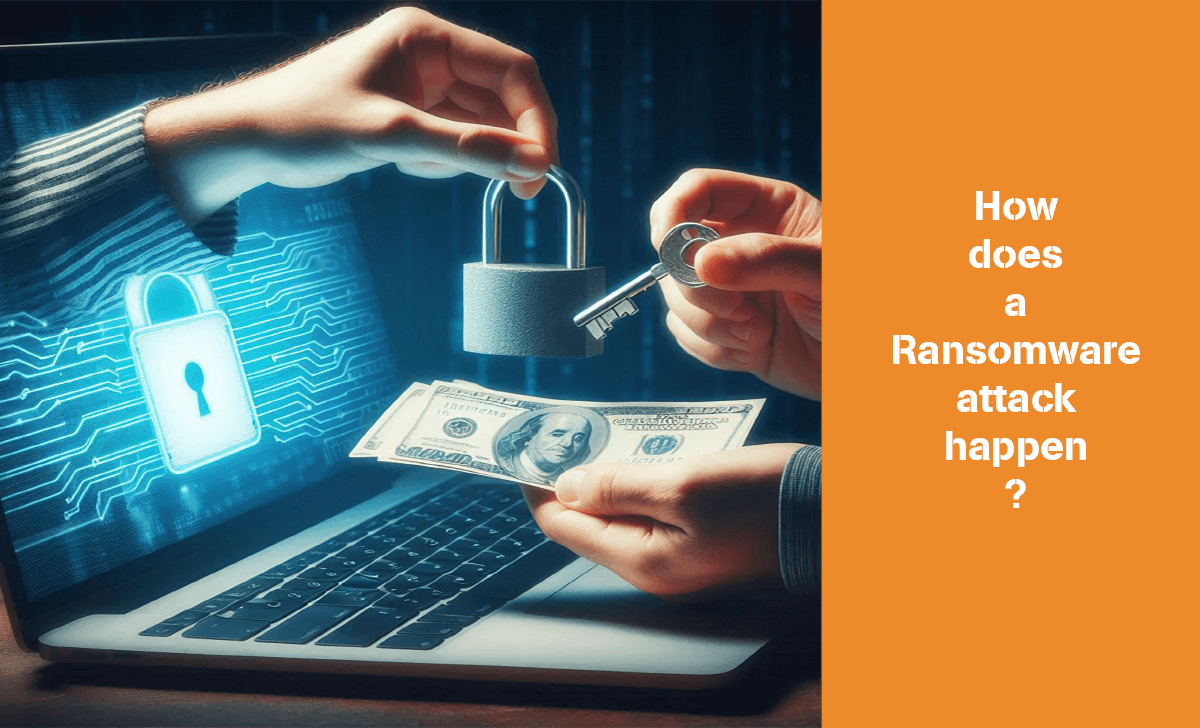Ransomware is a type of malware that can encrypt data or lock access to a user’s device. If they want to regain access to the device or data, the victim must pay the hacker a certain ransom.
For more information about the concept of Ransomware as well as how to prevent it, please take a look at upcoming content from AZcoin now.
What is Ransomware?

Ransomware is the general name for malicious software designed to infiltrate the computer system of one or more users. Once successfully infiltrated, this malicious software will encrypt data or lock access to the victim’s device.
If the victim wishes to regain access to the compromised device or data, he or she will be forced to pay a certain ransom to the attacker. But that will not guarantee that the victim will not be attacked again.
At present, there are many ways for Ransomware to penetrate devices, such as:
- Using cracked software of unknown origin.
- Click on the attached file in the email.
- Click on ads containing ransomware.
- Accessing fake websites, websites of unknown origin,…
How does a Ransomware attack happen?

Normally, the security breach process of Ransomware will take place in the following order:
- Users accidentally access a source containing Ransomware, at which point the malware will install itself on the terminal and any network devices it can access.
- Successfully installed malware contacts a command server controlled by the attacker to generate cryptographic keys to be used on the local system.
- The malware will immediately proceed to encrypt any data it can find on the local machines and networks it has infiltrated.
- The malware locks the victim’s device or important data and displays blackmail instructions, ransom payments, and threats if not done.
- Victims can try to pay the required ransom to get it unlocked, but in many cases, even if the ransom is paid, the device and data will still be locked and exploited.
Also, if you want to know more information about technology or security, you can try checking out: Caching, Phishing,…
How many types of Ransomware are there?

Although relatively sophisticated and constantly evolving, we can divide Ransomware attacks into 3 main types:
Encrypting Ransomware
Encrypting Ransomware is the most common type of ransomware that works by encrypting data from victims once they have successfully infiltrated. Accordingly, once they have penetrated, they will create two keys, one to encrypt the victim’s files and one held by the hacker’s server to decrypt.
After encrypting the file, Encrypting Ransomware will display a notice on the victim’s computer, informing about the status as well as asking for ransom.
Non-encrypting Ransomware
Also requires breaking into the victim’s computer system, but instead of encryption, Non-encrypting Ransomware will completely block access to the device.
The victim will not be able to perform any operations with the device other than making the ransom payment as notified.
Leakware Ransomware
Leakware Ransomware is a type of malicious software that will use the information to threaten to publish the victim’s data online if the ransom is not paid.
With the above characteristics, it can be said that this type of software has a form of deployment quite similar to Encrypting Ransomware when both attack the victim’s important data.
What to do when infected with Ransomware?

Many victims, when they discover they have been attacked by Ransomware, will want to pay the ransom to regain their information and access rights. However, don’t be in a hurry to do so, but seek out Cyber Security experts for the least expensive solution.
At the same time, you should also have preventive measures available such as:
- Back up important data regularly to secure offsite storage devices where possible.
- Regularly update computer software and applications, especially security applications.
- Be careful with strange links or files coming from websites or unknown entities.
- Use specialized protection software if you are a large business or organization.
Besides, if you are looking for a safe and convenient place to exchange cryptocurrencies, come to the best crypto exchange site here.
Conclusion
So we have gone through the entire overview of the concept of Ransomware as well as how to prevent it. Hopefully, we have helped you gain more experience to prevent being attacked, and see you again in other content from the future at AZcoin.

I am Tony Vu, living in California, USA. I am currently the co-founder of AZCoin company, with many years of experience in the cryptocurrency market, I hope to bring you useful information and knowledge about virtual currency investment.
Email: [email protected]











